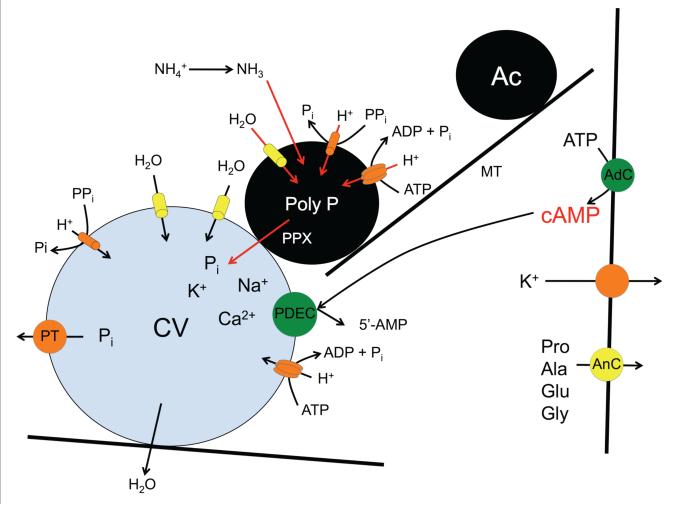Fig. 4.
Model proposed for regulatory volume decrease in T. cruzi. Cell swelling causes activation of an adenylyl cyclase (AdC) that results in a spike of intracellular cAMP, resulting in microtubule-dependent movement of acidocalcisomes (Ac) and fusion with the contractile vacuole (CV) with translocation of an aquaporin. A rise in ammonia and its sequestration in acidocalcisomes activates an exopolyphosphatase (PPX) that cleaves poly P, releasing inorganic phosphate residues and also various phosphate-chelated osmolytes, such as calcium and other cations. The resulting osmotic gradient sequesters water, through the aid of the aquaporin, which is subsequently ejected into the flagellar pocket. RVD is completed by the release of amino acids through an anion channel (AnC) and K+ through a potassium channel both localized in the plasma membrane. Termination of this cycle is by hydrolysis of cAMP through a phosphodiesterase C (PDEC) located in the contractile vacuole (CV). Phosphate is transporter back to the cytosol by a phosphate transporter (PT). Proton pumps (V-H+-ATPase and H+-PPase) maintain an electrochemical gradient in both the CV and Ac.

